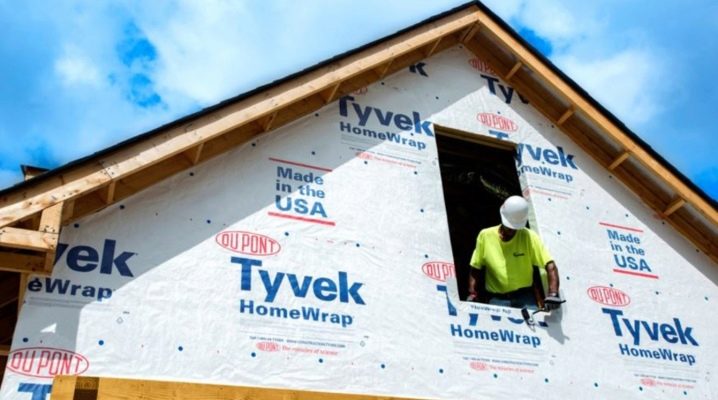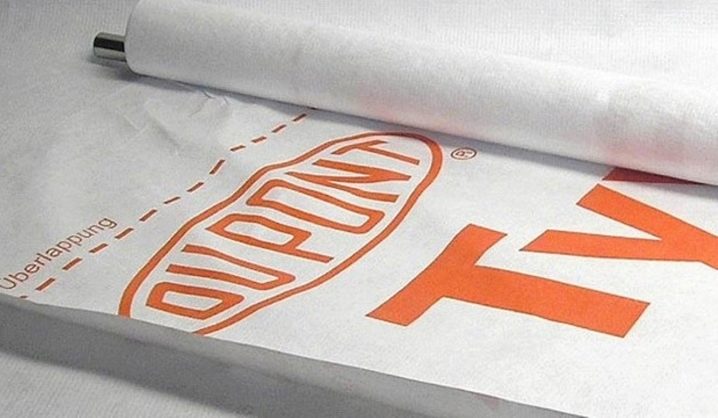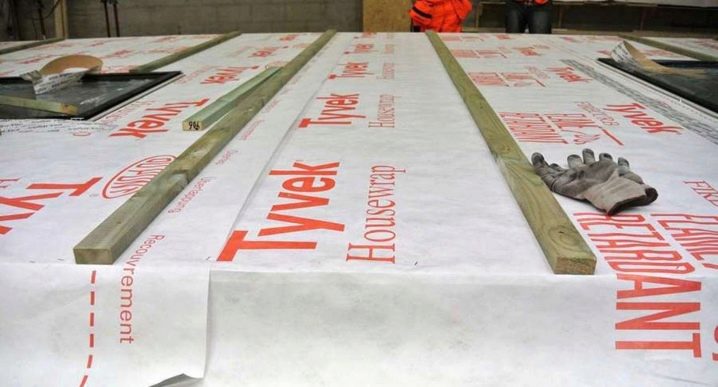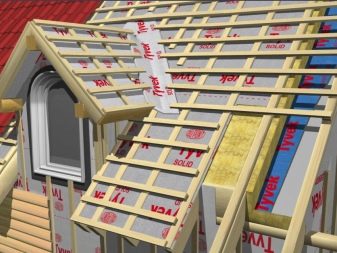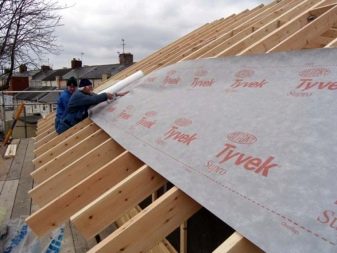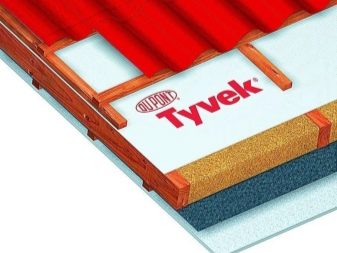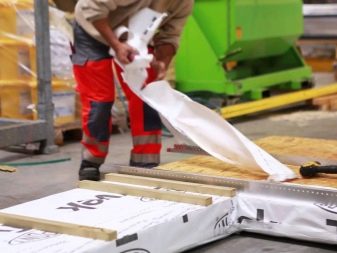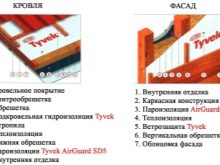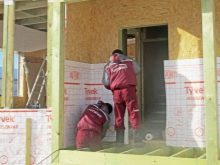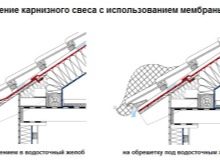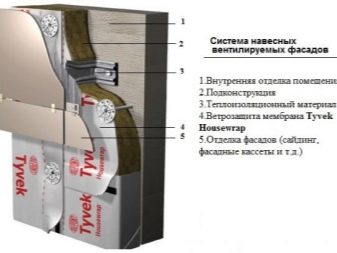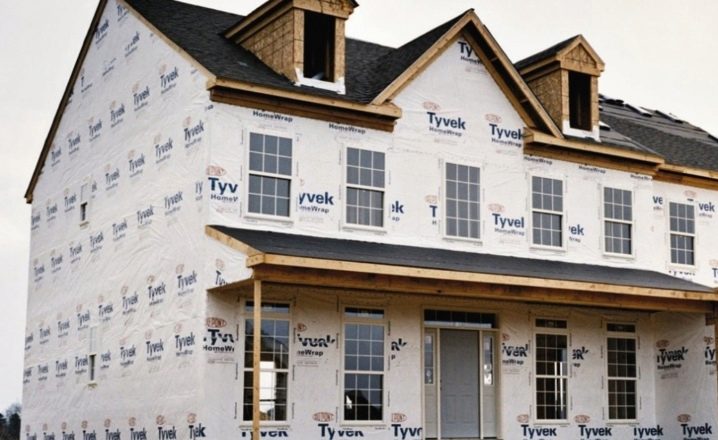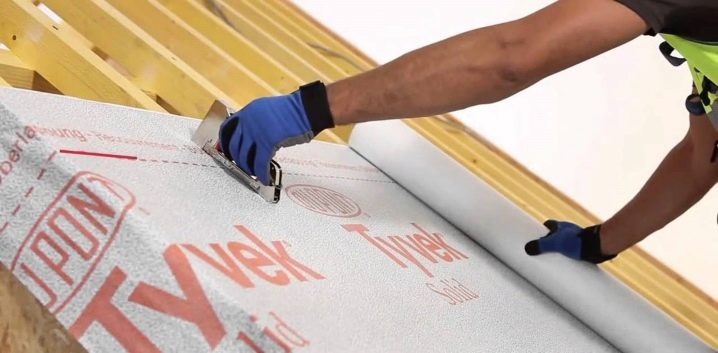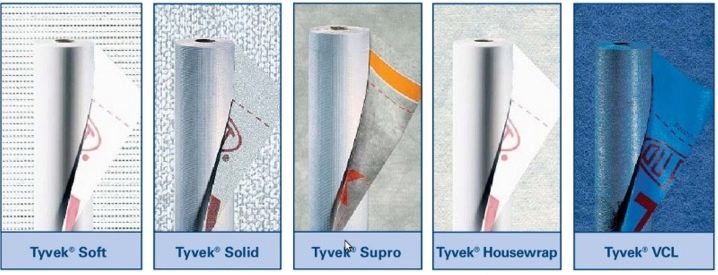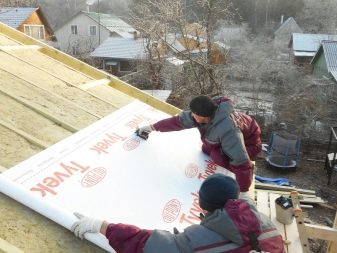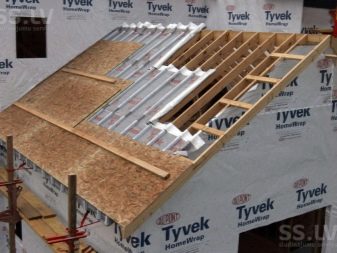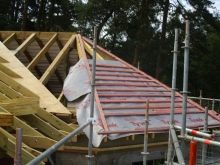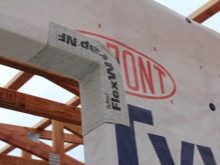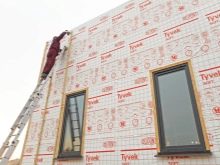Features of Windproof Products Housewrap Tyvek from DuPont
DuPont is a fairly well-known corporation that develops and supplies innovative materials to the world market. The most popular materials are lycra, kevlar, mylar, freon, nylon fiber. Equally well-known in the construction field is the Housewrap Tyvek membrane. This is a building material with technical characteristics that exceed the level of existing analogues.
What it is?
Housewrap Tyvek is a membrane material that is most popular on the market due to its reliability and the use of high technology in production. The membrane is used for wind protection.. DuPont Corporation guarantees the material characteristics of strength, vapor permeability, as well as a high level of protection.
The composition of Housewrap Tyvek is represented by thin continuous fibers of ethylene polymer with low pressure.Manufacturing technology consists in the use of high-speed creation and connection in the presence of a certain temperature. The material has a non-woven structure, which makes it vapor-permeable, and quite durable to protect against wind.
The windscreen is perfect for any attic floor as a private house, and giving.
Wind and moisture protection for inter-room premises from this manufacturer is offered only in high quality and at a fairly affordable price. Customer reviews about it are mostly positive.
You can choose the highly combustible material Housewrap 1060b or the slightly combustible material Firecurb 2066b.
The characteristics of Housewrap Tyvek windproof products are as follows:
- possibility of laying directly on the insulating layer;
- high vapor permeability due to one layer of windproof waterproofing material;
- mission - protection from wind, isolation from water;
- lightness and strength.
Benefits
The Tyvek membrane has a number of advantages over other building materials.
These include the following factors:
- building structures with a membrane layer will last much longer than without it;
- the heat insulation characteristics of the construction with Tyvek are stable;
- no ventilation gaps are required, which is why there is more free space for the insulation layer;
- the heat in the room is conserved because the membrane is breathable;
- The installation of this building material is easy and simple.
Thus, the wooden structure can serve for a long time without the use of special chemical compounds. Membrane, laid the right side, will reduce the flow of funds during the heating season.
A room with a layer of such a membrane is economical, durable and quite attractive. Such the house will be reliably isolated from moisture, in the winter it will keep warm, and in the summer - cool.
DuPont conducted independent tests on Tyvek material, which showed that the membrane:
- retains heat 8 times better;
- conveys wet steam 3 times better;
- 6 times better waterproofing.
disadvantages
Along with positive features, the considered building material has some drawbacks. For example, for mounting the membrane, an inclination of at least 15 degreesas the accumulation of water can harm it.Installation will take some time, since the wood elements need to be processed, and Only install the membrane on a dry surface..
And also the disadvantages include a rather high cost, although this is completely offset by the quality of the material.
Kinds
In the global market, membranes are represented by a number of varieties with similar functionality:
- Tyvek housewrap. This material is super diffuse, is presented in white. It protects the facade from the effects of adverse weather conditions.
- Tyvek Solid It is a non-woven waterproofing that I use on walls and roofs.
- Tyvek soft designed for wind insulation and waterproofing. The functionality is to remove the steam from the room, usually used when installing the pitched roof, placed directly on the layer of insulation.
- Tyvek Solid Silver - it is dense polyethylene on which there is a thin layer of metal.
- Tyvek Supro Tape differs in the increased vapor permeability and existence of the adhesive tape.
- Airguard. This material is ideal as insulation for buildings with frames. It ensures optimum moisture and temperature.
How to apply?
Tyvek film is mounted in the same way as other roofing roll materials, for example, glass roofing material or roofing felt. The only difference is that the membrane must be laid on top of the insulating layer or placed on top of the truss structurewhile fan gap is not needed.
During the installation, it will be necessary to make an overlap on the seams along the available dotted lines - by 15 or 20 centimeters.
The Tyvek membrane can be fastened to the structure with the help of mechanical fasteners - nails, staples or with glue. Additional liquid outflows may also be required so that it does not accumulate on the membrane.
The sequence of installation of building material is as follows:
- First, the membrane must be rolled out and secured to the rafters with a counter-grill. If a hinged facade is mounted, you need to install several brackets as fasteners and lay a layer of insulation;
- after that, the Tyvek membrane should be rolled out so that it fits snugly to the layer of insulation and fix with dowels;
- where the membrane is in contact with the front fastening, it is necessary to cut several holes;
- where the building material adjoins the windows and doors, it is necessary to glue the tape to the joints so that it does not slam because of the wind.
You will learn more about the installation steps in the next video.
